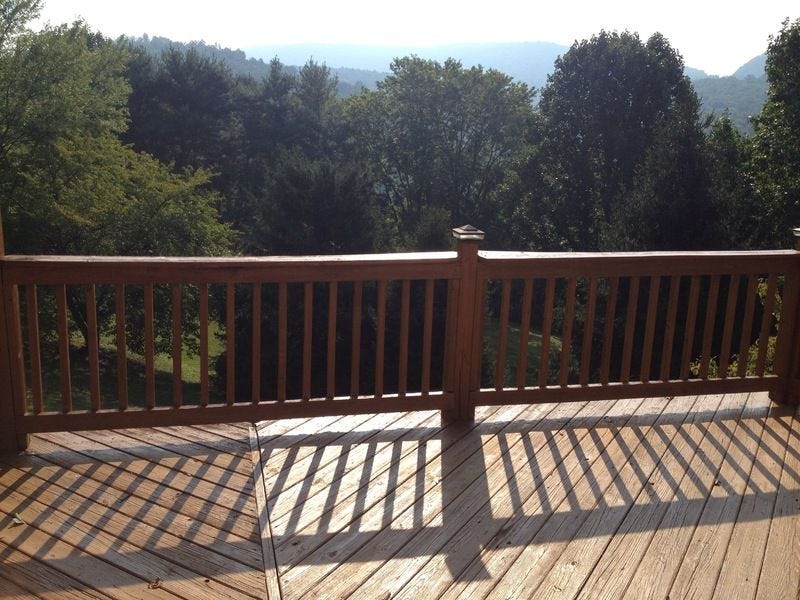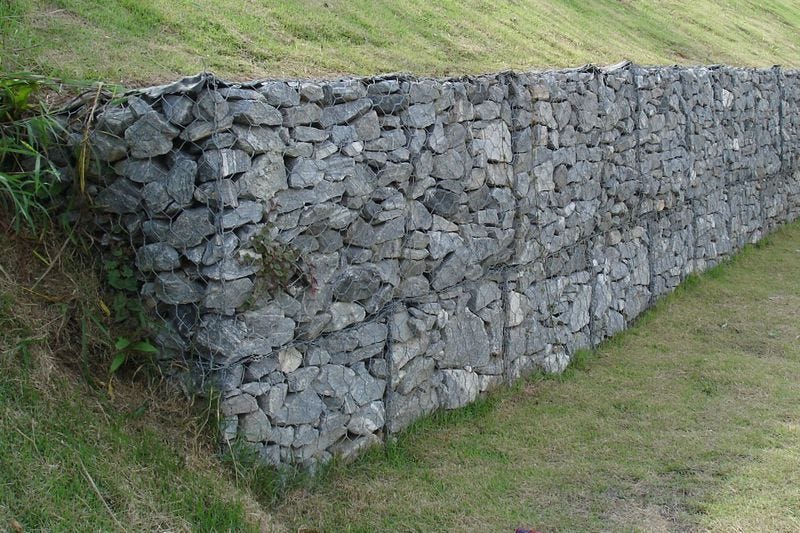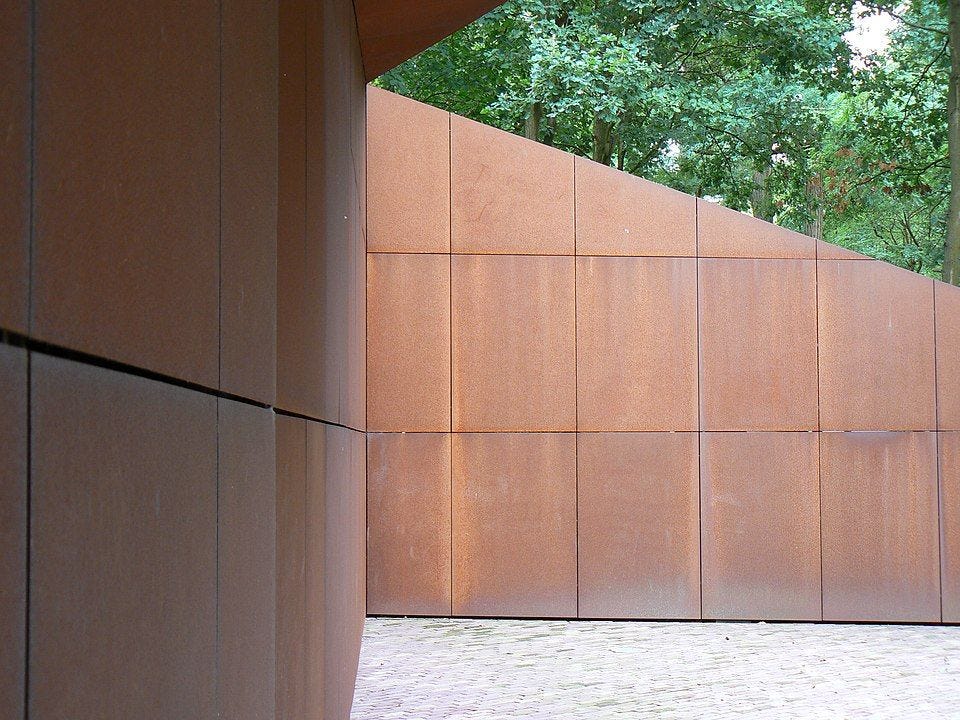Garden Ideas for Slopes
Design ideas for planning a hillside garden.
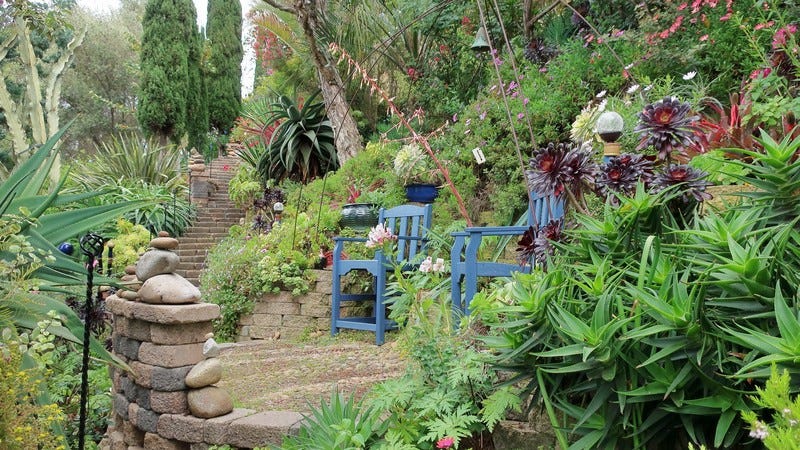
In our previous post, we talked about the technical aspects of creating a garden on a sloping landscape. Once these issues are addressed and the slope is deemed suitable for working on, we can start thinking about the aesthetic aspects of designing a sloping garden. Here are some ideas you can use on sloped gardens.
Terracing
In order to tame the steepness of your slope, you may have to construct terraces to prevent erosion or make it workable as a garden site. The terraces are suitable for planting but you could also use the terraces, or the top of the slope, as a patio area. If the slope is tall enough where this area is out of sight from below, you can create a secret garden hideaway at the top of your hillside garden. This is especially worthwhile if you have views from the hillside that you do not see from below. Maybe this area is secluded enough that you can have private hot-tub and/or fire pit up there where you can relax on summer nights.

Regardless of whether you want to have a patio area or not, it is beneficial to build steps into your sloped garden to enable easy access for maintenance. When adding steps, the ideal dimensions are 6" (15cm) rise, 15" (38cm) tread, and minimum 3 ft wide (1m). Pay attention to ensure that your terraces are spaced properly to accommodate the steps. For example, if you have a terrace formed by a 2ft high retaining wall, the steps that rise from it to the next terrace will have 4 treads, totaling a vertical run of 60". This means that your terraces should be 60" deep so that the steps line up with the terracing. Having steps that lead up the slope to an area that is not visible from ground level gives the upper space a sense of intrigue and adds to the feeling of having a hidden garden area up above. If you can make the path of the steps more curvlinear instead of ascending in a striaght line, well placed shrubs can add to the element of surprise of this hidden area.
If you are dealing with a slope that descends from your home, then terracing can be useful to extend the usable flat area next to your home. Secret Space can be found at the bottom of the slope instead.
Decks
In the cases where the terracing does not yield enough space for a patio area, then a deck could be constructed that extends over the slope to create the additional space needed. This will require pillars to be built into the slope to support the overhanging section. This is a project that is not easily done buy a DIYer and will likely require permits so you should work with a trusted contractor to construct this.
When building a deck, if the height of the deck floor is >3ft (1m) from the ground below a railing must be installed for safety. Local building codes tend to follow this rule, but some may be stricter.
Water Features
Slopes are a great place to install water features. Using the gravity of a slope, a waterfall effect can be easily created by placing large rocks or flagstone pavers in the waterway. Water features are great for creating just enough ambient noise to drown out the outside world and make your garden feel like a true escape from daily life.

Rock Garden
Slopes are a great place to install a rock garden or a crevice garden. This only works if the slope is not too steep (2:1 or less steep), else the rocks may not be stable and roll down the hill. Placing rocks of various sizes can create a stable base for rock-loving plants like succulents, ornamental grasses and ground-covers to grow in. The types of plants that do well in rock gardens tend to be deep rooting so this will help stabilize the soil on the slope.
Using flat edged stones like in this photo, you can incorporate informal natural looking steps for navigating up your sloping garden.
Edible Garden
If you are terracing your slope, consider using the first terrace for raised planter beds for growing edible plants. For gardens that rise up from the back of your home, the lower terrace is the most accessible so it is the most convenient to your kitchen. If your backyard is drenched in shade, the slope could allow to find more sun for your edible gardening by placing the beds further up the slope.
Native Plants
Maintenance on sloping gardens can be tough and the growing conditions can be just as tough for the plants you select for the site. By using plants that are native to your region, you will have plants that are happier living in the relative neglect that they will receive up on a slope. Native plants that grow naturally on hillsides will also tend to have the deep roots that will help hold your soil and prevent erosion. If you are not experienced working with natives, make sure the plants you use are well accustomed to garden conditions. Native nurseries often supply both to landscapers and for use as habitat restoration so not all native plants will be suitable for your site.
Get Creative With Your Materials
If you need to terrace your slope, the retaining walls will become part of the overall look of your garden. Instead of wood or concrete blocks, there are other material choices. Gabions are a good choice that help create a unique look. Gabions are cube-shaped metal wire baskets filled with rocks. The advantage of Gabions is that they allow water to pass directly through the wall to help prevent erosion or failure of the retaining wall.
Metal is another good choice for retaining walls. Cor-ten steel, that forms a rusty patina over time, is becoming a very popular material for this use. Metal panels such as corrugated roofing panels can also be fastened to the front of a wooden or concrete block wall to create a different look.
If you are building retaining walls with concrete blocks, a very clean contemporary look can be achieved by applying a lightly colored smooth stucco finish to the walls.
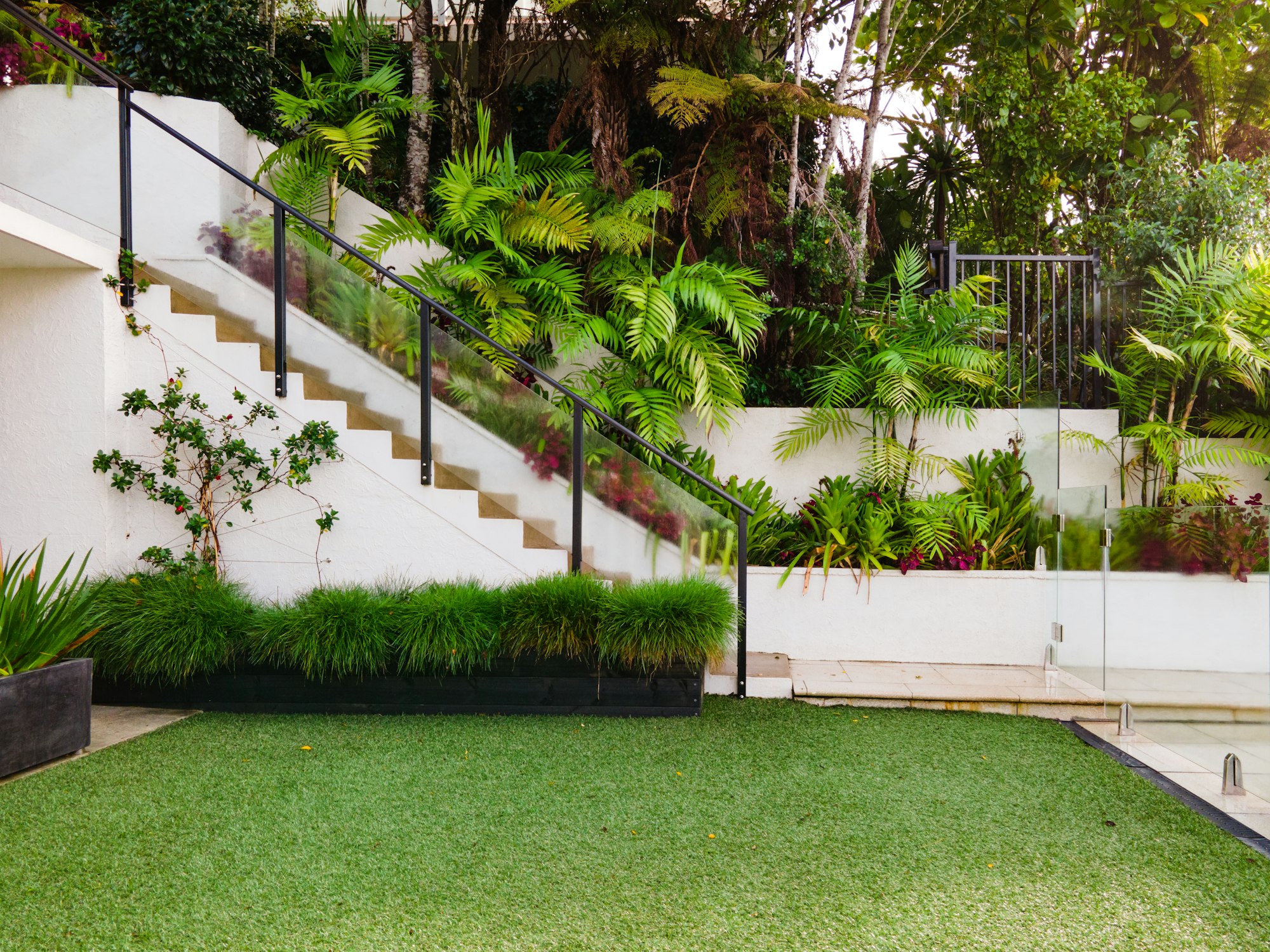
As you can see, there a number of options for what to do with the hillside in your yard. Let us know in the comments below if you have any additional tips or questions about hillside gardening.



